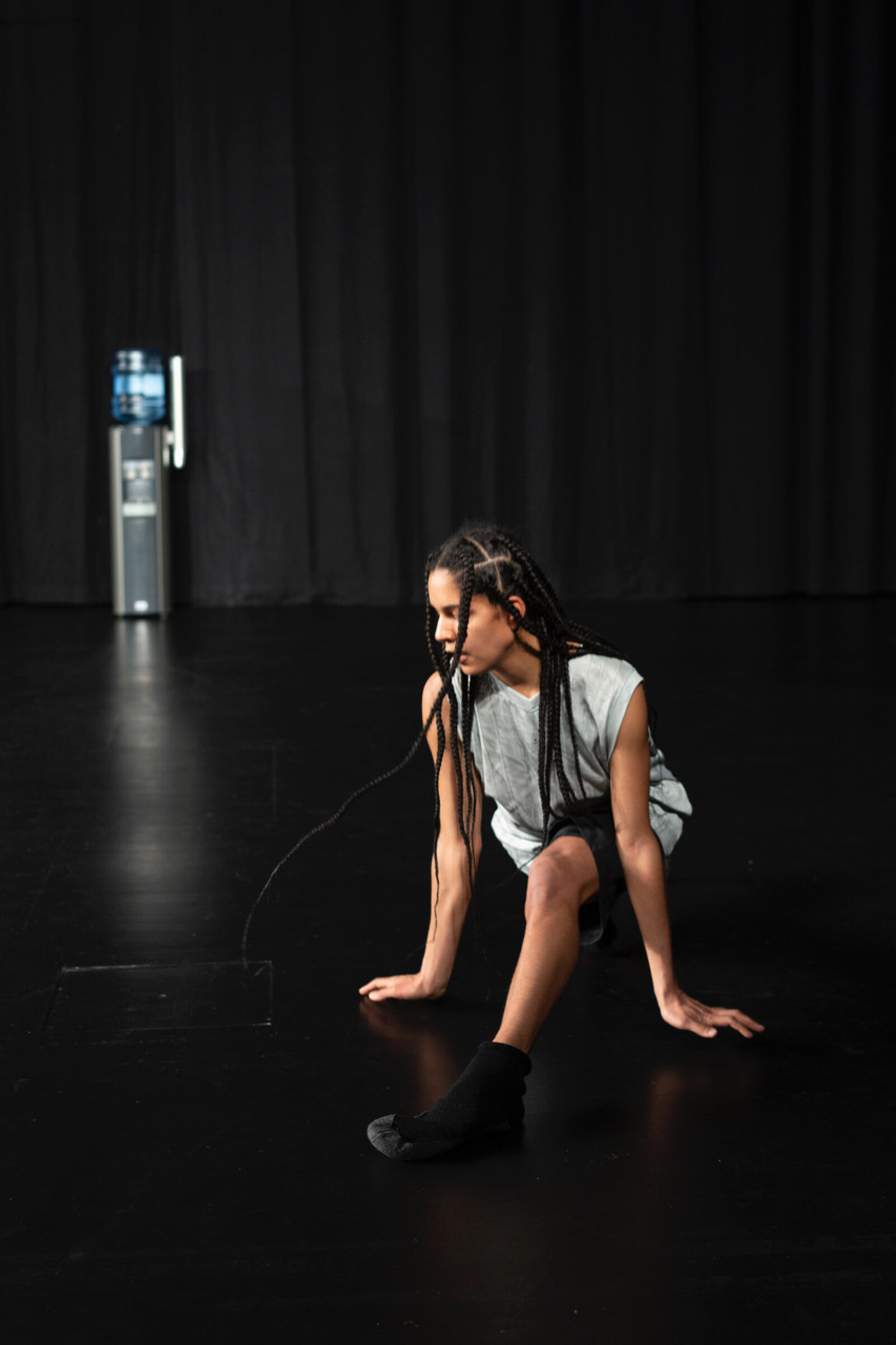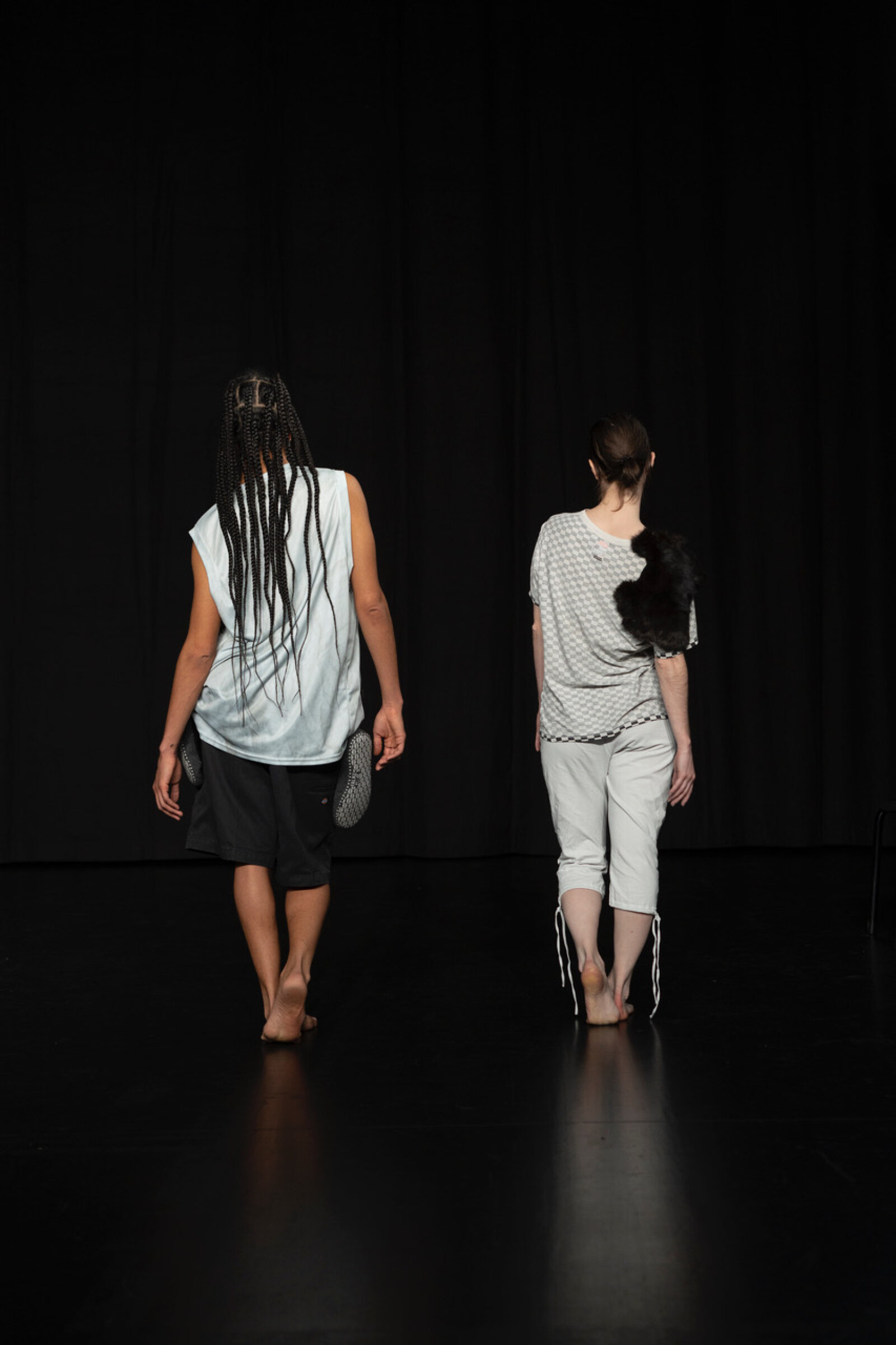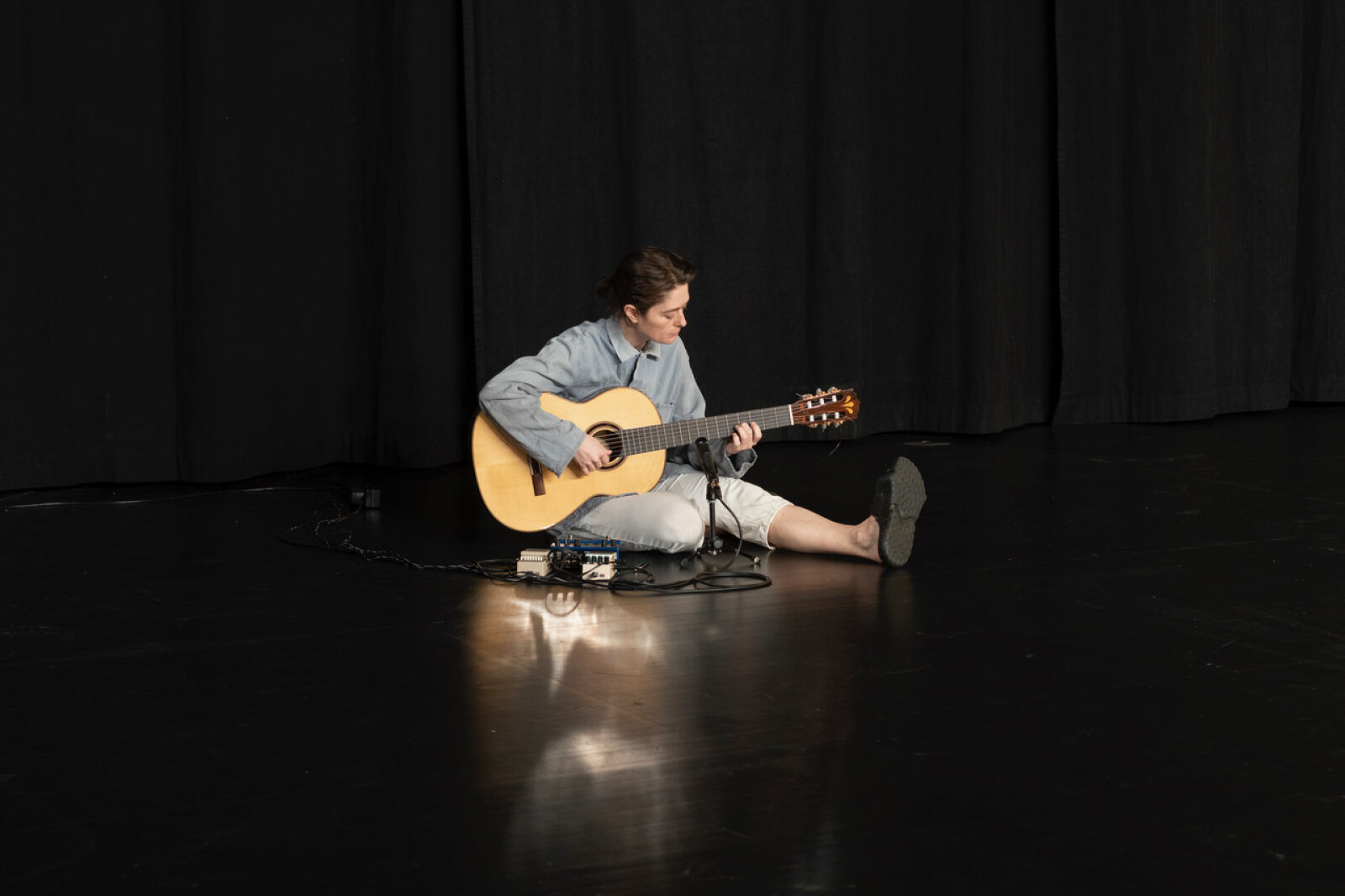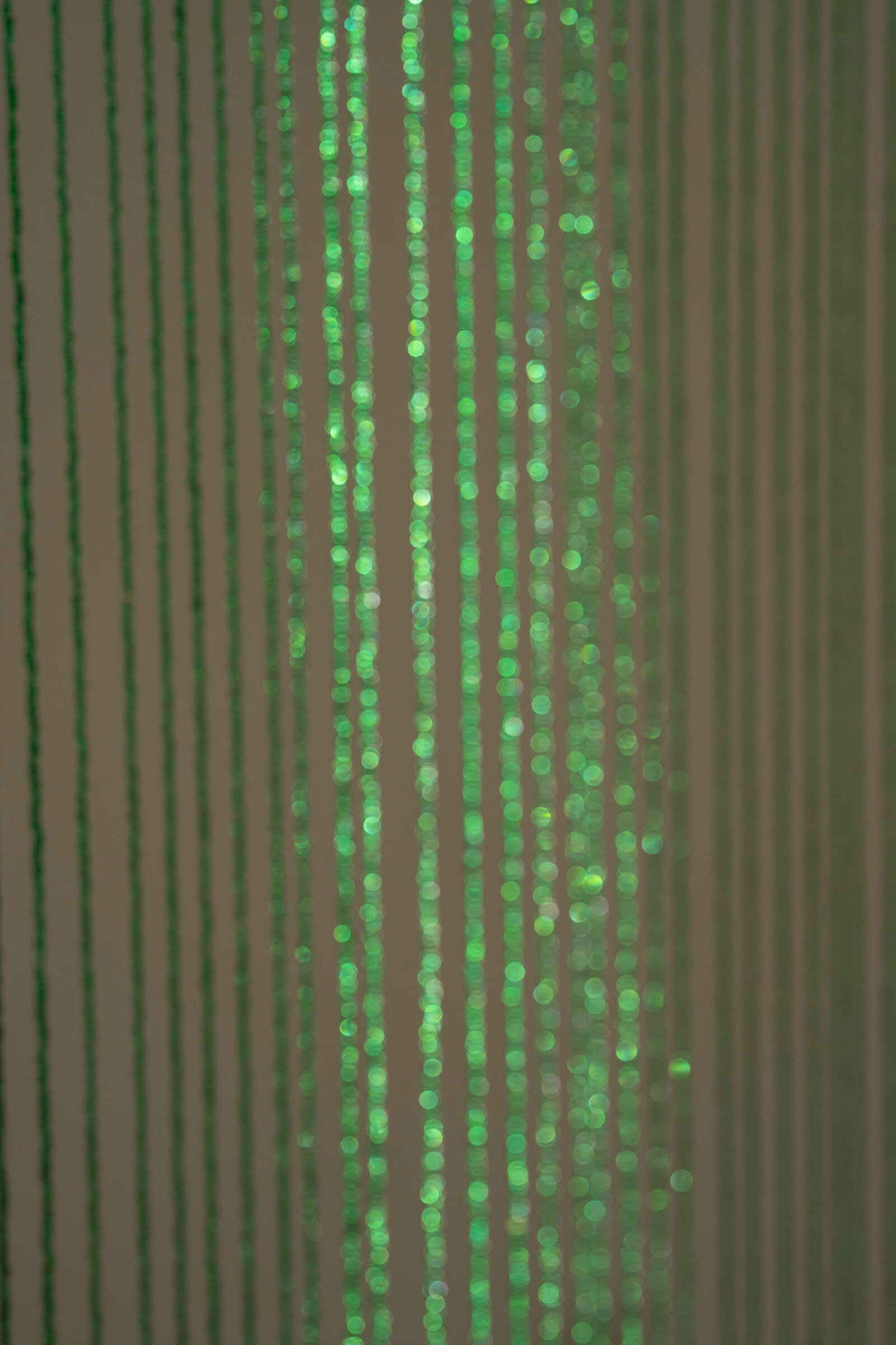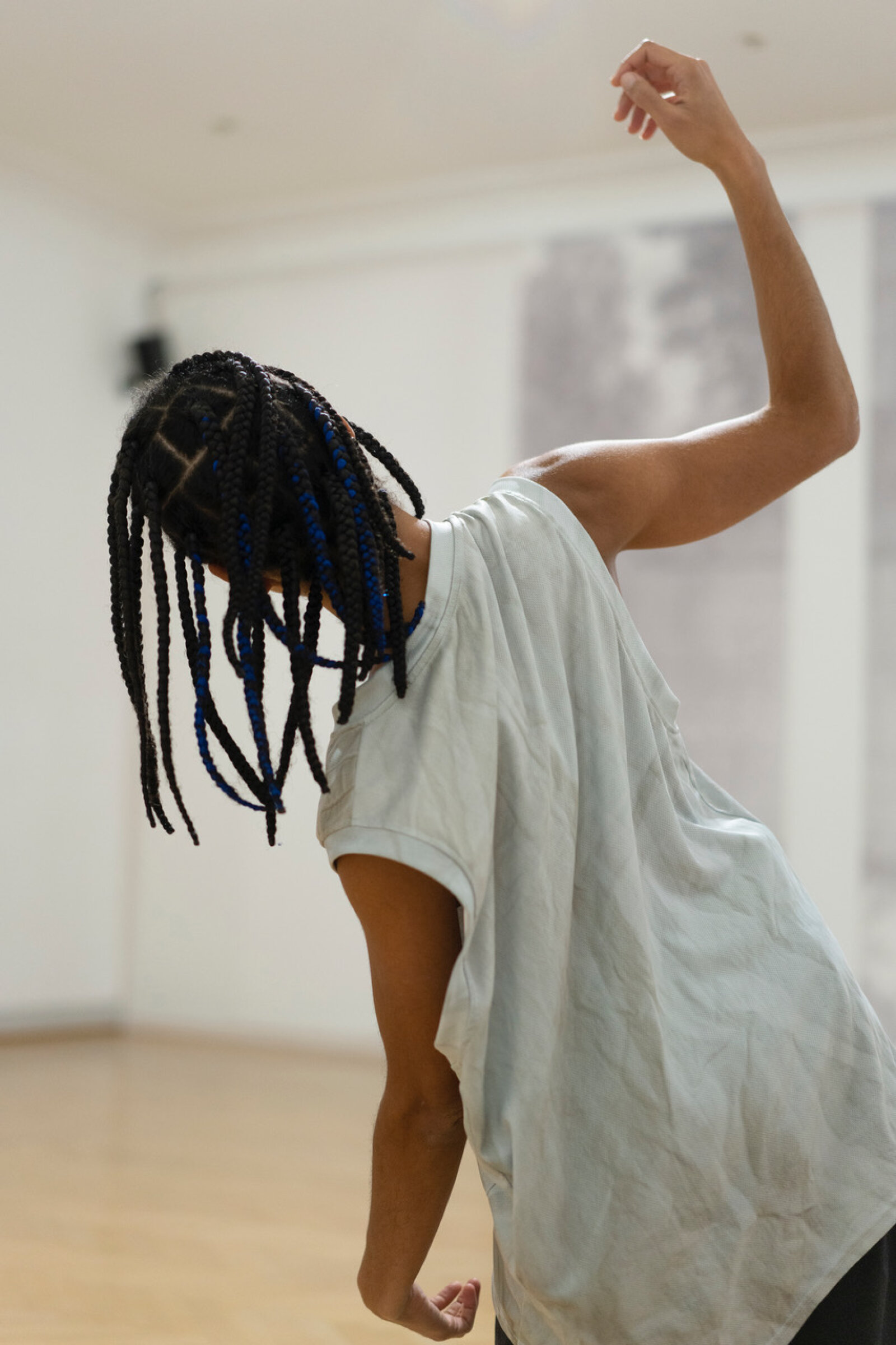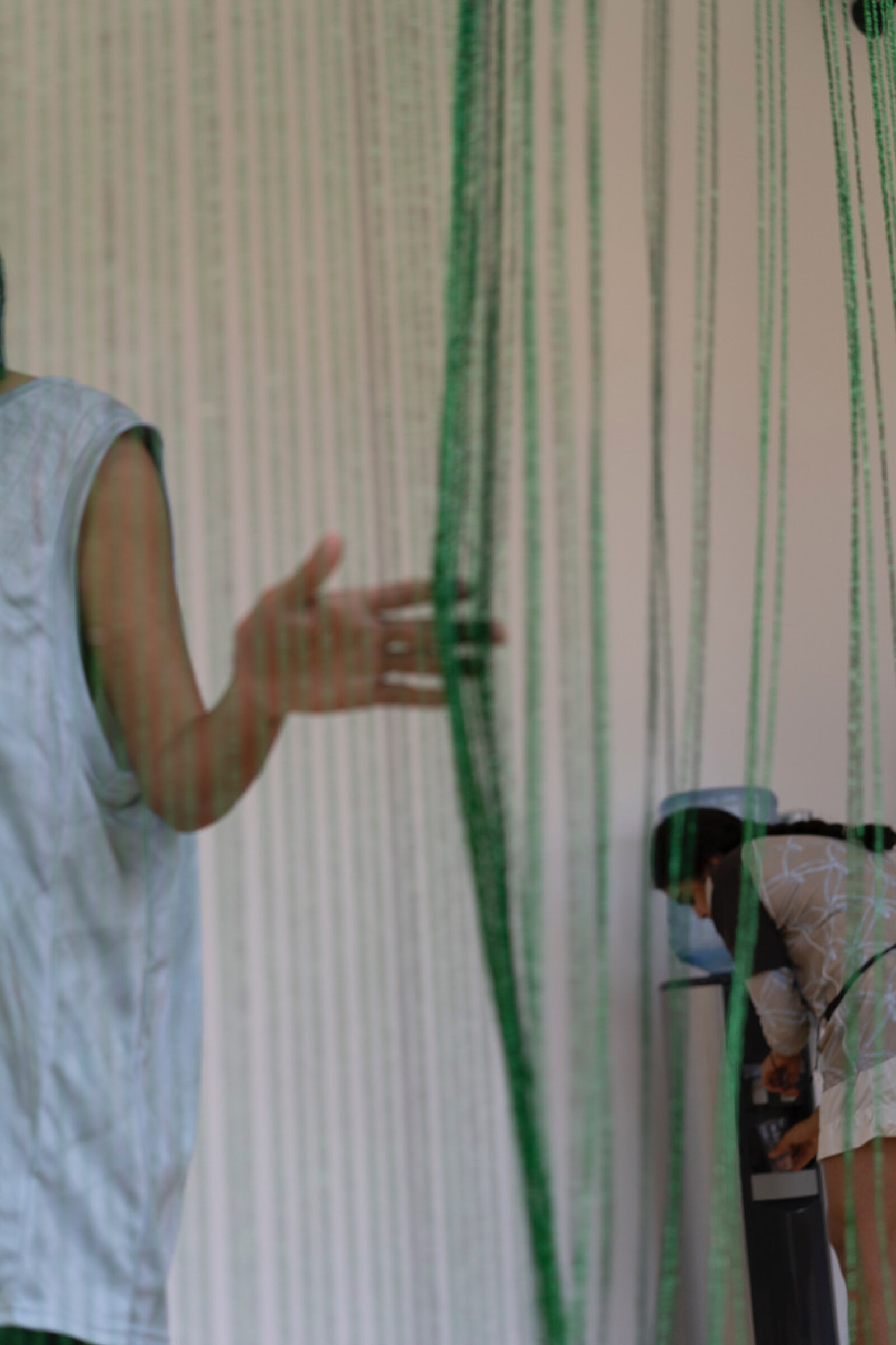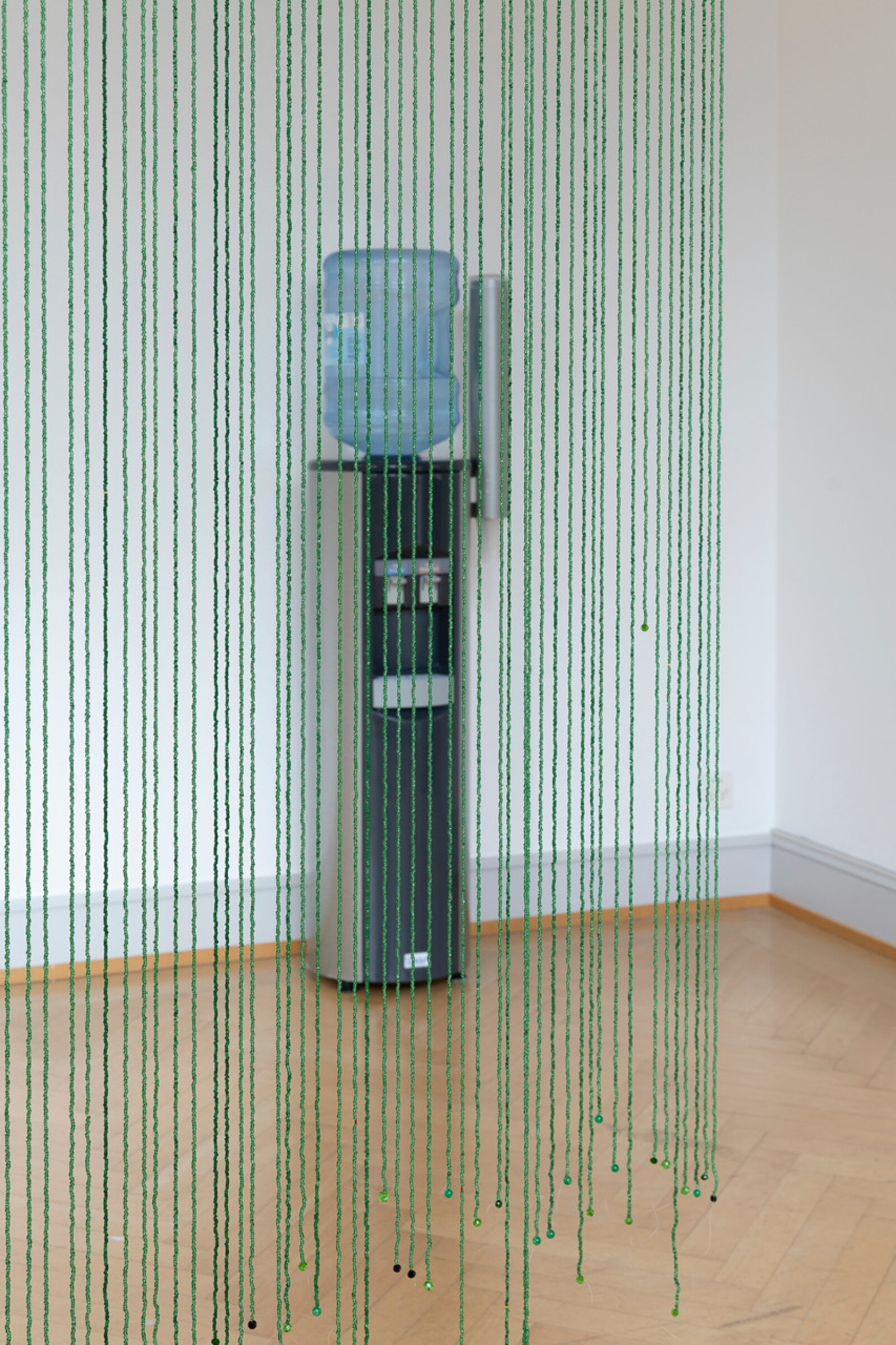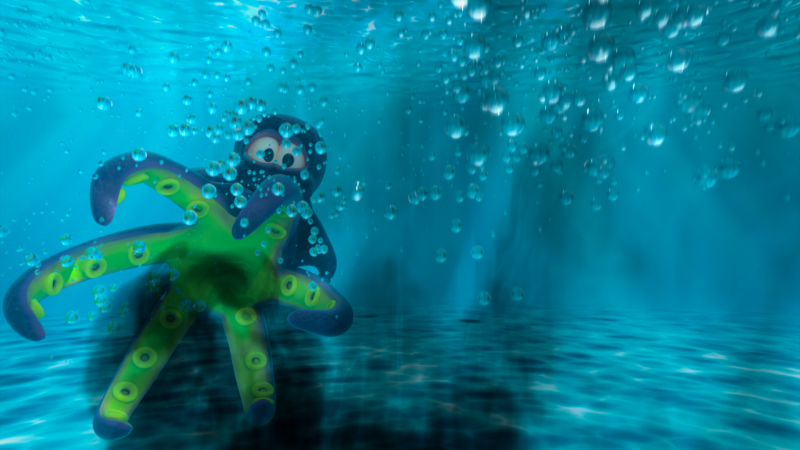The starting point for Juliette Uzor’s dance performance (ah ah ah) (theatre version) is the 1801 essay “Über das Marionettentheater” (On the Marionette Theatre) by German poet Heinrich von Kleist. In Kleist’s essay, a dancer named C. and the narrator talk about the peculiarities of puppetry and the relationship between the puppet and the puppeteer, who must attain a high level of dexterity in order to make the puppets dance.
Fascinated by the text’s artificiality and its intellectual games, (ah ah ah) (theatre version) raises questions about gravity, the (re)presentation and orientation of today’s bodies while playing with the appeal of artificial intelligence. What directions do the strings run in, whose fingers are holding on to them, who is dancing?
In (ah ah ah) (theatre version), Juliette Uzor explores the complex relationship between movement and language. Together with guest artist Axelle Stiefel aka The Operator, (ah ah ah) (theatre version) goes to places where sound, rhythm, imagery and the meaning of words follow their own logic. Combining glitches and syncopation, the narrative is built around the unpredictability of body language. In the bespoke stage set, a green beaded curtain itself represents the spectacle's pleasurable nature. A water dispenser bearing the Eden brand stands ready as a thirst quencher for afterwards. The antithesis of dance, according to Mr. C., is resting, a moment that should be made to vanish as much as possible.
The starting point for Juliette Uzor’s dance performance (ah ah ah) (theatre version) is the 1801 essay “Über das Marionettentheater” (On the Marionette Theatre) by German poet Heinrich von Kleist. In Kleist’s essay, a dancer named C. and the narrator talk about the peculiarities of puppetry and the relationship between the puppet and the puppeteer, who must attain a high level of dexterity in order to make the puppets dance.
Fascinated by the text’s artificiality and its intellectual games, (ah ah ah) (theatre version) raises questions about gravity, the (re)presentation and orientation of today’s bodies while playing with the appeal of artificial intelligence. What directions do the strings run in, whose fingers are holding on to them, who is dancing?
In (ah ah ah) (theatre version), Juliette Uzor explores the complex relationship between movement and language. Together with guest artist Axelle Stiefel aka The Operator, (ah ah ah) (theatre version) goes to places where sound, rhythm, imagery and the meaning of words follow their own logic. Combining glitches and syncopation, the narrative is built around the unpredictability of body language. In the bespoke stage set, a green beaded curtain itself represents the spectacle's pleasurable nature. A water dispenser bearing the Eden brand stands ready as a thirst quencher for afterwards. The antithesis of dance, according to Mr. C., is resting, a moment that should be made to vanish as much as possible.
| Artistic direction, choreography, concept | Juliette Uzor |
| Performance, Co-Choreographie | Juliette Uzor, Axelle Stiefel |
| Sound | Axelle Stiefel |
| Stage | Juliette Uzor |
| Costumes | Sven Gex |
| Outside Eye | Marie Jeger |
| Light | Thomas Giger |
| Production | Patricia Bianchi/mixed orientations |
| Booklet design | Sonja Flury |
| … |
| A production by Juliette Uzor in co-production with Gessnerallee Zurich. The production is financed by earmarked production funds from the City of Zurich, which Gessnerallee receives as a co-production institution. | |
| Thanks to | Brigham Baker, Myriam Uzor, Sonja Flury, Camille Durif Bonis |
